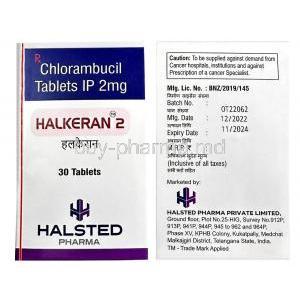Azacitidine
- I. Introduction to Azacitidine
- II. Composition and Chemical Properties of Azacitidine
- III. Uses of Azacitidine
- IV. Off-Label Uses of Azacitidine
- V. Mechanism of Action: How Azacitidine Works
- VI. Dosage and Administration of Azacitidine
- VII. Side Effects of Azacitidine
- VIII. Detailed Analysis of Common Side Effects
- IX. Interactions of Azacitidine with Other Medications
- X. Contraindications and Warnings Associated with Azacitidine
- XI. Special Considerations for Azacitidine Administration
- XII. Managing Overdosage and Emergency Situations
- XIII. Storage and Handling Precautions for Azacitidine
- XIV. Important Precautions and Patient Education
I. Introduction to Azacitidine
Overview and Historical Background Azacitidine, a drug in the field of oncology, emerged as a ray of hope in the early 2000s. It was initially conceived for its potential to modify DNA and has since surpassed therapeutic expectations, revolutionizing the treatment of myelodysplastic syndromes (MDS).
Basic Pharmacology and Drug Classification Azacitidine is classified as a nucleoside metabolic inhibitor. Its unique pharmacodynamic properties allow it to integrate into the RNA and DNA of cancer cells. This integration leads to disruptions that primarily impede the malignant cells' ability to increase uncontrollably.
II. Composition and Chemical Properties of Azacitidine
The formulation of Azacitidine is carefully crafted with a balance of ingredients and harmless additives to ensure that the medication is effective and stable. Azacitidine's chemical structure is characterized by its nucleoside composition, which allows it to enter cells quickly. Its pharmacokinetics show that it is quickly absorbed and distributed throughout the body, vital for its therapeutic effects.

III. Uses of Azacitidine
Azacitidine is a medication used to treat a group of blood cancers called myelodysplastic syndromes (MDS) 1. It is also approved by the FDA to treat acute myeloid leukemia (AML) in adults who are not able to receive intensive chemotherapy 23. Azacitidine is a type of chemotherapy that works by slowing or stopping the growth of cancer cells 1. It has shown results in treating different types of cancers depending on the specific genetic and molecular characteristics of each individual cancer 1.
Here are some references that provide more information on Azacitidine:
2: FDA 3: Cancer Research UK 1: MedlinePlus
IV. Off-Label Uses of Azacitidine
Researchers are currently investigating the possibilities of Azacitidine in diseases other than its approved indications. The reason behind this exploration is the drug's ability to influence landscapes.
Numerous case studies and ongoing research efforts are gradually revealing the applications of Azacitidine in cancer treatment protocols.
V. Mechanism of Action: How Azacitidine Works
The way Azacitidine works is quite complex, involving interactions between cells. Its primary focus is targeting the epigenetic marks found in cancer cells specific to this disease.
By affecting gene expression and causing a decrease in DNA methylation, Azacitidine disrupts the cell cycle that cancer cells go through. As a result, it hinders their growth and ability to survive.
VI. Dosage and Administration of Azacitidine
Dosage Guidelines for Azacitidine The use of Azacitidine follows a dosage protocol that is customized based on the unique needs of each patient and their clinical condition.
Methods for Administering Azacitidine To ensure optimal effectiveness and patient safety, it is essential to follow best practices when administering Azacitidine. This includes reconstitution techniques and choosing between intravenous or subcutaneous administration methods.

VII. Side Effects of Azacitidine
An overview of the side effects of Azacitidine reveals a range of reactions, some tolerable while others are rarer and more severe.
Healthcare professionals have a responsibility to handle and reduce these side effects. They can achieve this by educating patients about issues, providing symptomatic relief, and making necessary adjustments to the dosage.
VIII. Detailed Analysis of Common Side Effects
Assessing the frequency and severity of side effects caused by Azacitidine is essential as they can vary significantly. While most side effects are manageable, some can be more severe. Require immediate medical attention. Experienced side effects include nausea, fatigue, and abnormalities in blood counts.
- To manage patients effectively, it is crucial to monitor their blood counts regularly.
- Additionally, providing support to alleviate nausea and
- addressing fatigue through adjusted dosing schedules and supportive care are essential for patient management.
IX. Interactions of Azacitidine with Other Medications
Drug interactions are something to keep in mind when using Azacitidine alongside medications. It's essential to be cautious, especially when combining it with drugs or immunosuppressants.
When using combination therapies, balancing effectiveness and potential risks is crucial. This involves adjusting the doses and closely monitoring for any adverse effects.

X. Contraindications and Warnings Associated with Azacitidine
Patients who have kidney problems, liver disorders, or have had allergic reactions to Azacitidine or its components need to be especially careful and may need to consider other treatment options. It is essential for healthcare providers to closely monitor individuals with conditions such as heart disease, respiratory issues, and increased risk of infections, as these can worsen during treatment with Azacitidine.
XI. Special Considerations for Azacitidine Administration
- When it comes to patients, it's essential to be careful with the dosing and closely monitor them when administering Azacitidine. This is because they are more prone to experiencing side effects and have health conditions that need consideration.
- If you're pregnant or nursing, it's best to avoid using Azacitidine as it could potentially harm the fetus or newborn. Instead, explore alternative treatment options. Make sure to use effective contraception methods.
- The use of Azacitidine in pediatric patients is still poorly defined regarding safety and effectiveness. Therefore it should be used cautiously with guidance from a specialist who can provide expert advice.
XII. Managing Overdosage and Emergency Situations
Signs of taking too much medication can manifest as intense feelings of nausea, vomiting, and disruptions in blood-related functions. It is crucial to seek medical attention in such situations. When encountering an overdose, it is essential to provide care. This involves monitoring blood-related parameters, managing fluid levels appropriately, and administering treatment to alleviate symptoms.
XIII. Storage and Handling Precautions for Azacitidine
Store Azacitidine at room temperature in a controlled environment away from light and moisture to ensure its stability and effectiveness.
Healthcare providers should follow safety protocols when handling Azacitidine, which includes using equipment and proper disposal methods to prevent contamination.
XIV. Important Precautions and Patient Education
It is crucial to educate patients about the treatment of Azacitidine for its success. Patients should be given information about the drug, what outcomes to expect, and how to manage any side effects. In addition, patients may need to make lifestyle adjustments, such as changes in diet and activity levels, to ensure that the treatment is as effective as possible and that any side effects are effectively managed.










